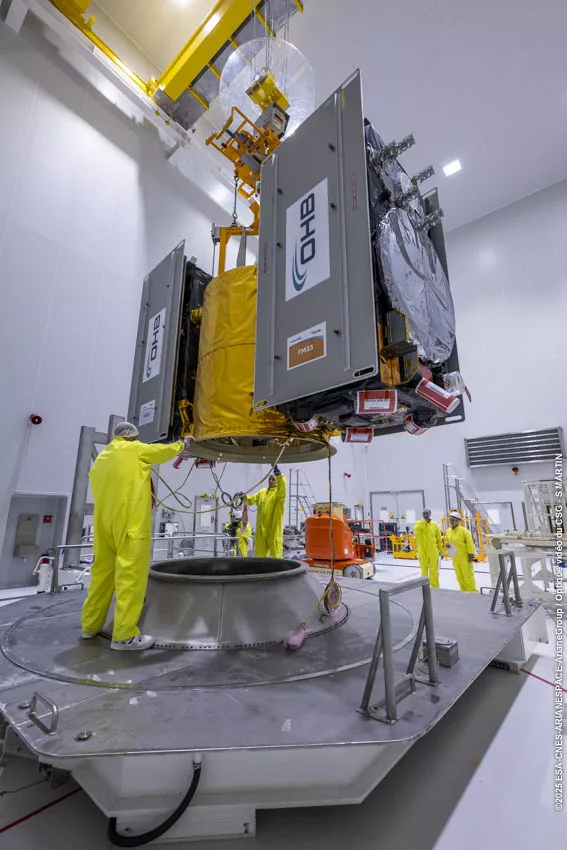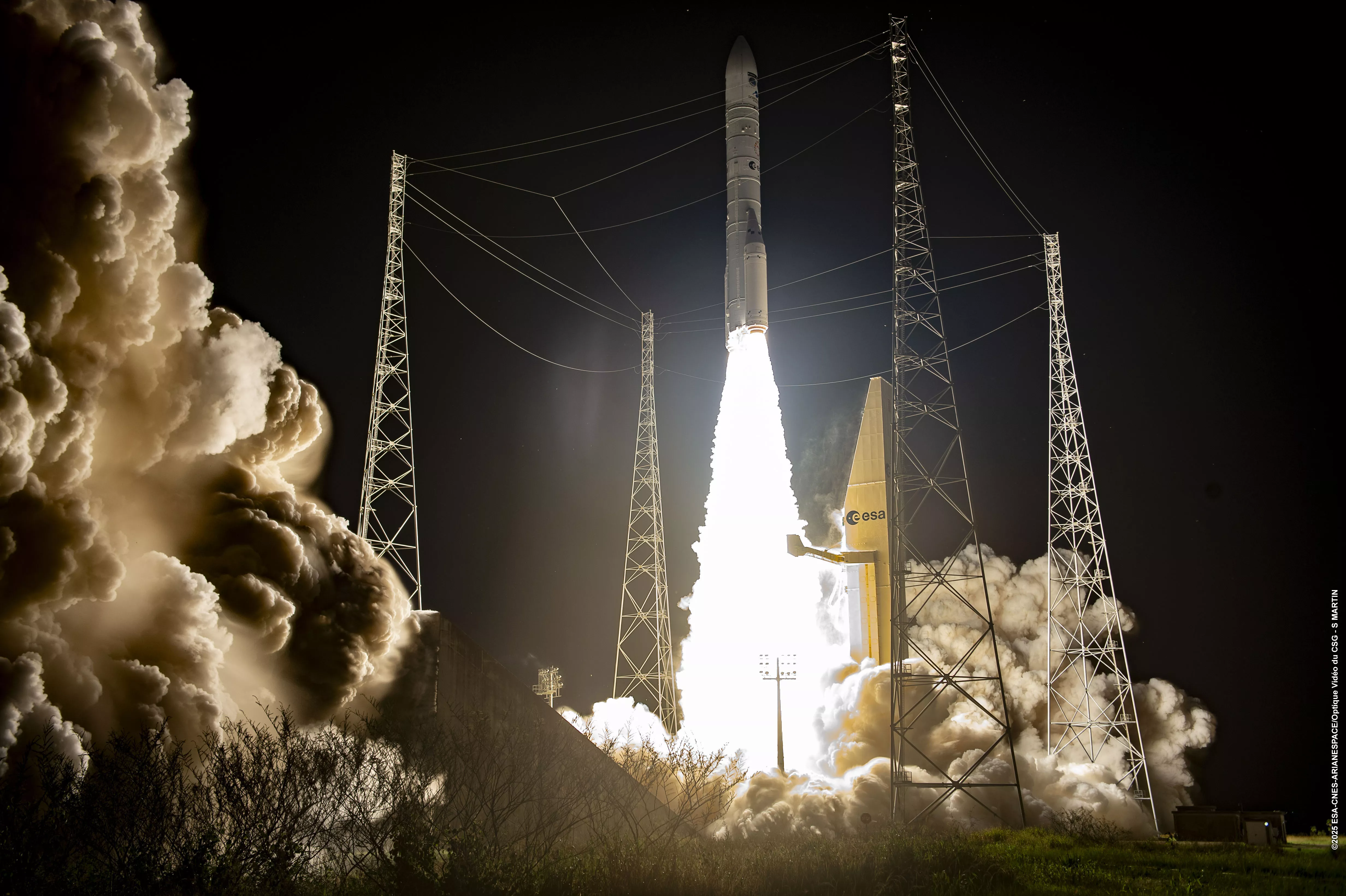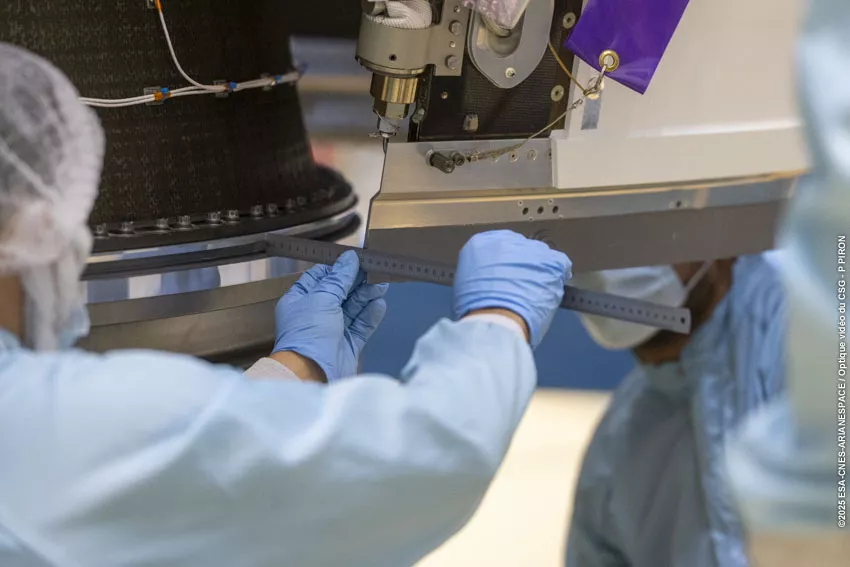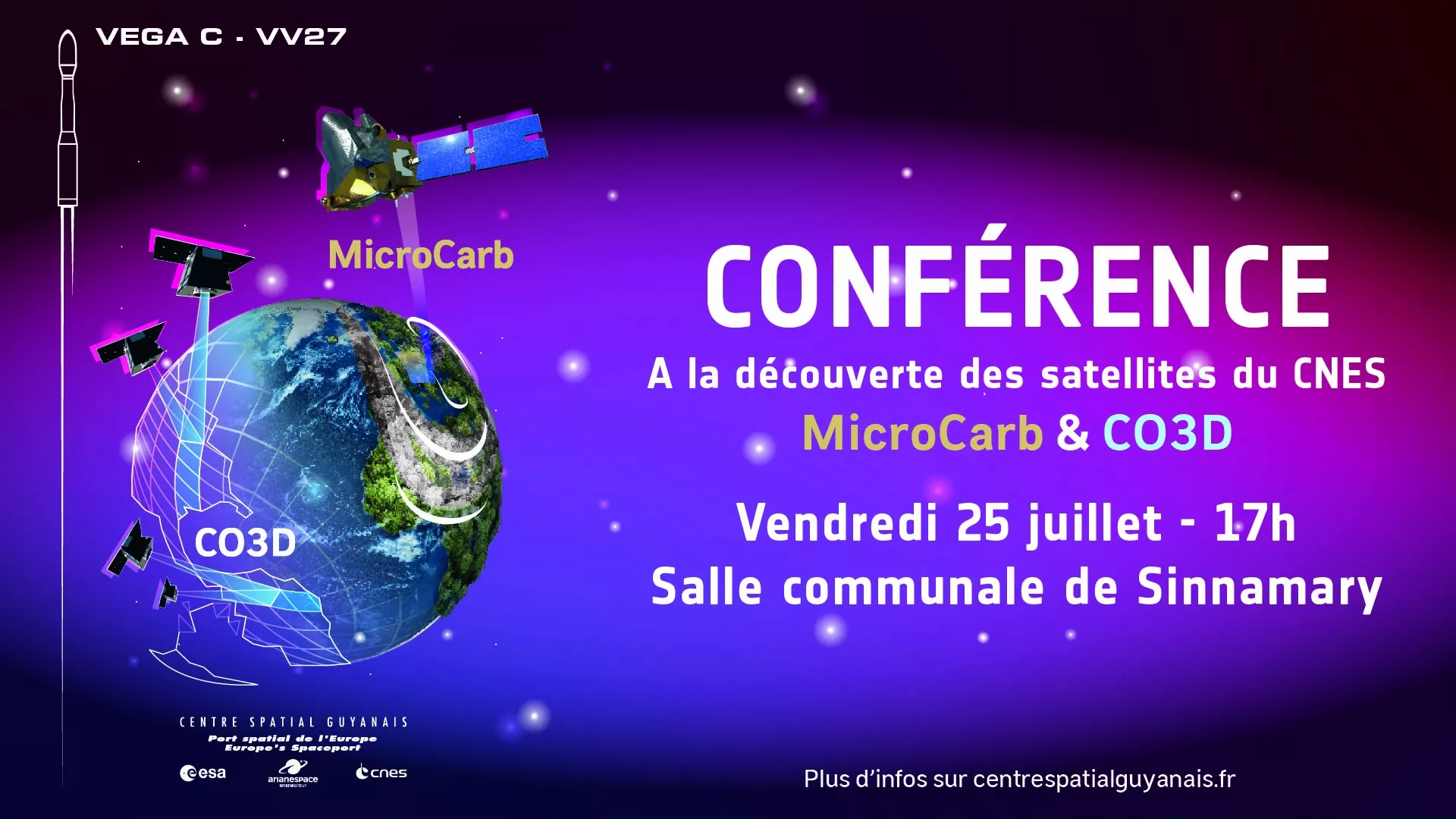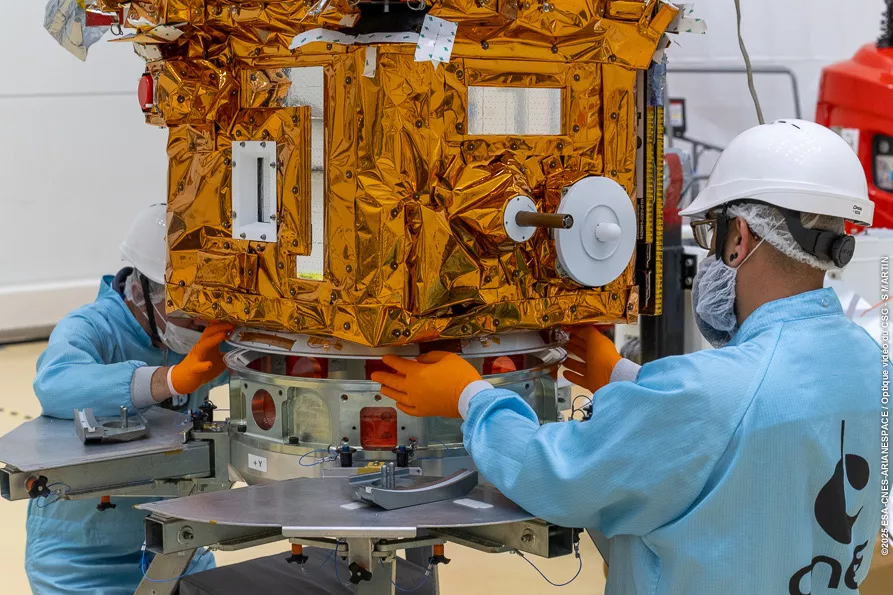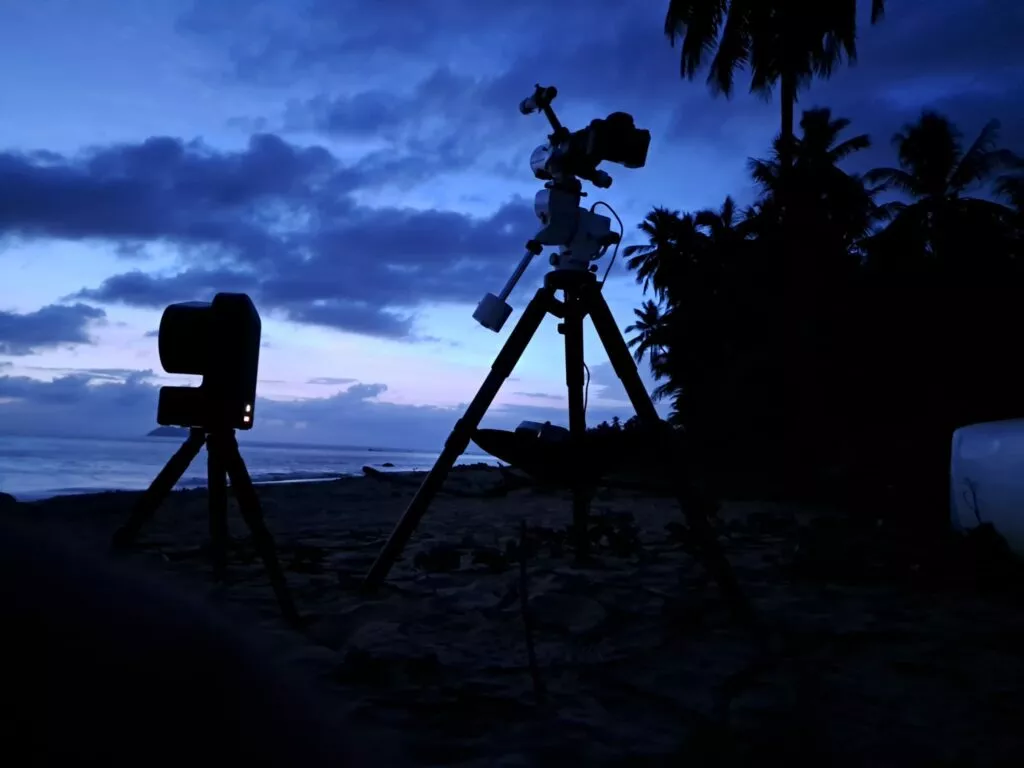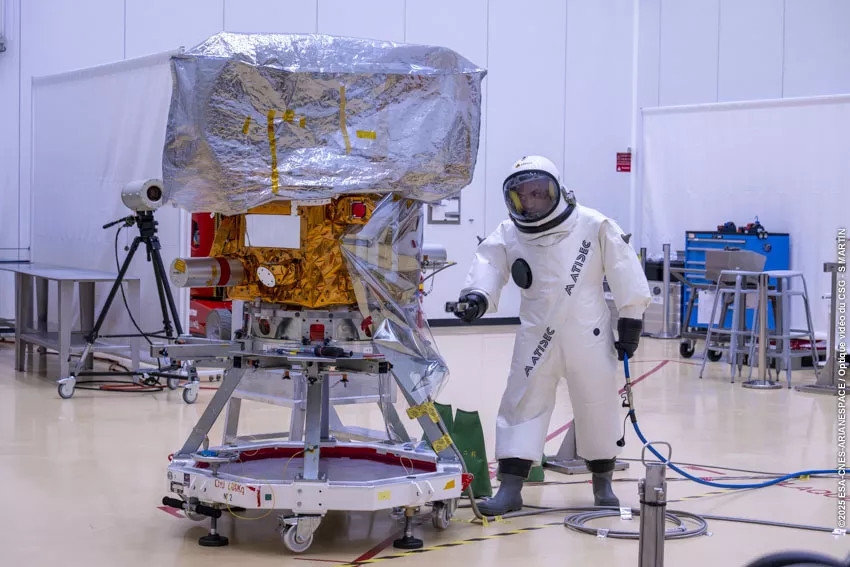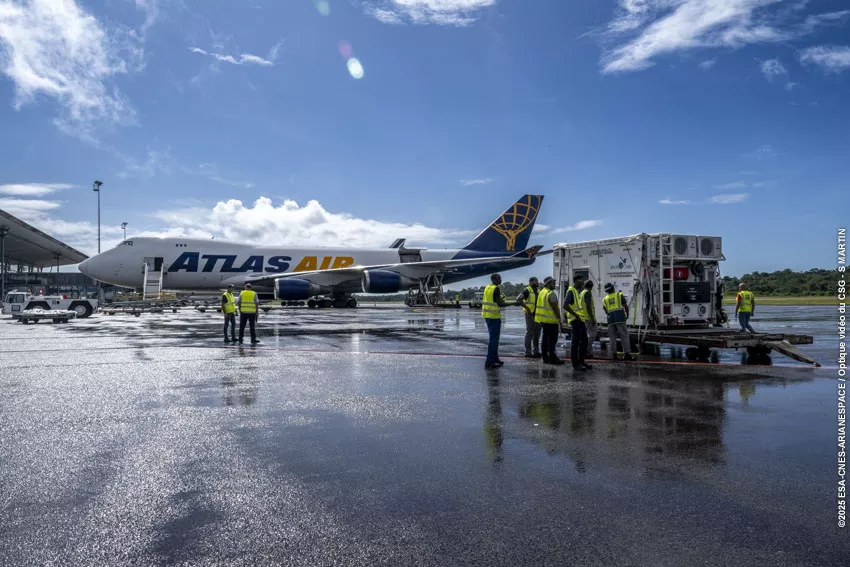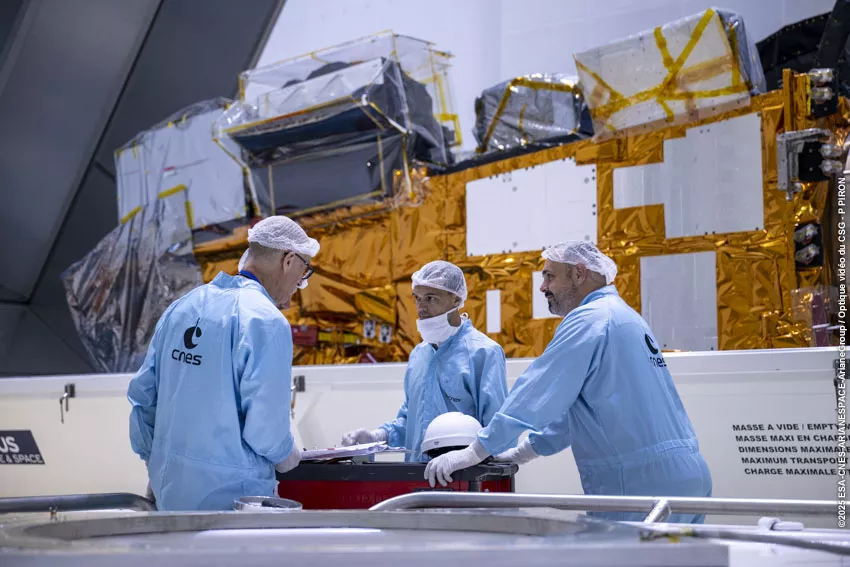Biomass: a look back at the preparation before the launch
With just a few hours to go before the launch of the Biomass mission from Europe’s Spaceport in French Guiana, here is a look back at the key stages in the preparation of this unique satellite. This technological marvel, designed to map the world’s forests, required very specific handling conditions. We met with Warren Bouchehida, Michael Fehringer and Stefan Kiryenko, three key players in the campaign, to give you a behind-the-scenes look at this precision operation carried out in Europe’s Spaceport’s clean rooms.
Before lifting off into space, each satellite undergoes a series of crucial steps in French Guiana. Biomass, developed by the ESA (European Space Agency), is no exception. The satellite was handled at the heart of the Payload Preparation Facilities (EPCU) upon its arrival in Kourou, in an ultra-clean environment fully configured to meet its technical needs.
“We revalidated and adapted the facilities to accommodate Biomass, based on a document listing the satellite client’s needs”, explained Warren Bouchehida, Payload Facilities Manager at CNES, the French Space Agency. Pure gases, backup energy, aerial lifts, lifting equipment, electrical connections: everything was in place to handle the satellite safely.
For several weeks, Biomass underwent a series of rigorous tests: so-called “good health” tests upon arrival in clean rooms, electrical checks, cleanliness inspections, propulsion system leak tests and specific radiofrequency tests conducted in an anechoic chamber (a cage that absorbs waves) installed for the occasion at the preparation halls.
Another unique feature of this campaign is the tailor-made logistics put in place for transferring the satellite between the various preparation halls. “The unloading of Biomass from its container and then its movement through the building’s clean corridors were carried out thanks to the support provided by APCO-CEGELEC, the French Space Agency’s manufacturer responsible for operating the EPCUs”, said Warren Bouchehida.
This satellite also boasts a spectacular feature: a gigantic reflector that will deploy in orbit. “Biomass’s simplified umbrella is a new instrument made from gold-coated molybdenum, measuring up to 12 metres in diameter once deployed,” noted Stefan Kiryenko, Launch Campaign Manager for the ESA. This is an engineering feat that requires extreme precision at every stage of its ground handling.
Because this mission is anything but trivial. It aims to map the world’s forests with unprecedented precision. “The precision of the measurements provided by Biomass is equivalent to that of a team of surveyors,” pointed out Michael Fehringer, ESA’s Biomass programme manager. Thanks to its radar, the satellite will be able to estimate the amount of biomass and carbon stored in tropical, boreal and temperate forests, providing essential data for understanding climate change.
After being filled with propellant (space fuel), Biomass was integrated onto its flight adapter and then encapsulated under the Vega-C fairing. It is now ready for its big launch, scheduled for Tuesday, 29 April, at 6:15 a.m. local time from Europe’s Spaceport.
Photo gallery

The support provided by Apco-Cegelec for the unloading and transport of biomass between the different preparation halls.
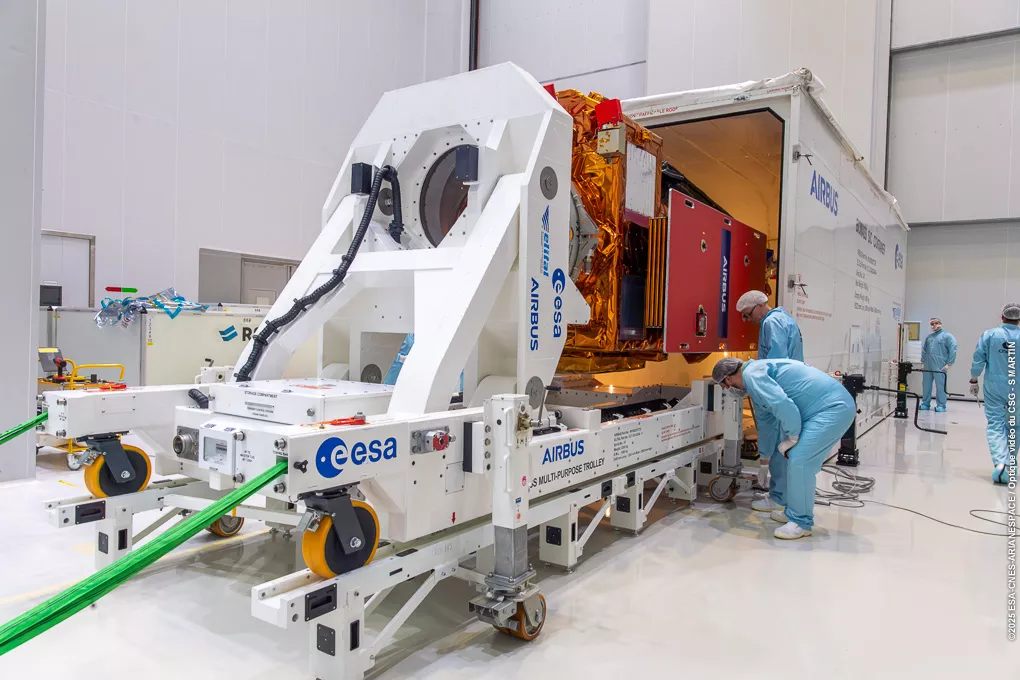
The support provided by Apco-Cegelec for the unloading and transport of biomass between the different preparation halls.

The support provided by Apco-Cegelec for the unloading and transport of biomass between the different preparation halls.
On the same section
-
VA266 mission in a nutshell
01/12/2025VV28 mission in a nuthsell
01/12/2025VA264 mission is a success!
04/09/2025VV27: behind the scenes at Europe’s spaceport as MicroCarb and CO3D get ready for lift-off
31/07/2025VV27: two conferences to find out more about satellites
30/07/2025Flight Vega-C : VV27 mission in a nutshell
24/07/2025Stargazing Event Ahead of the VV27 Mission Launch
